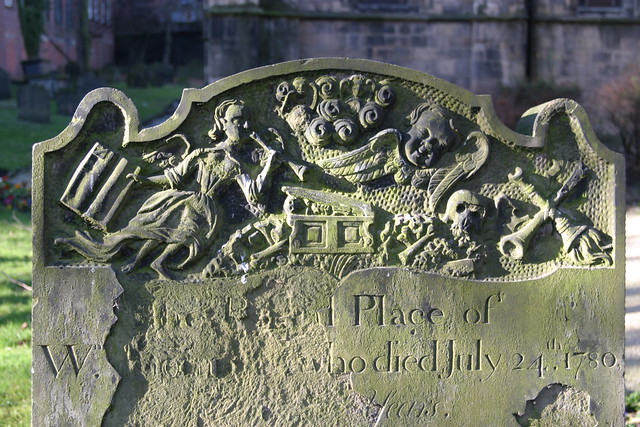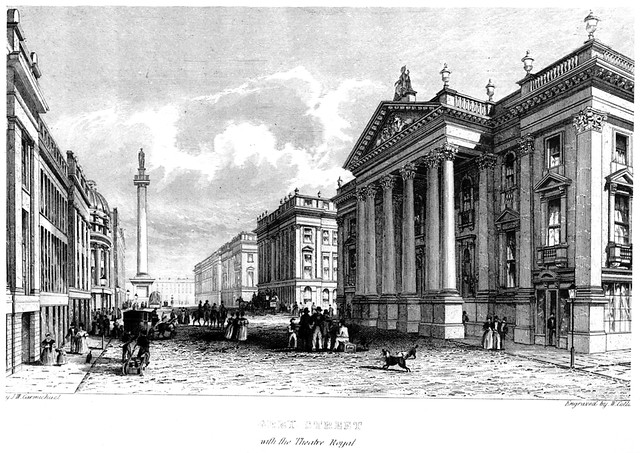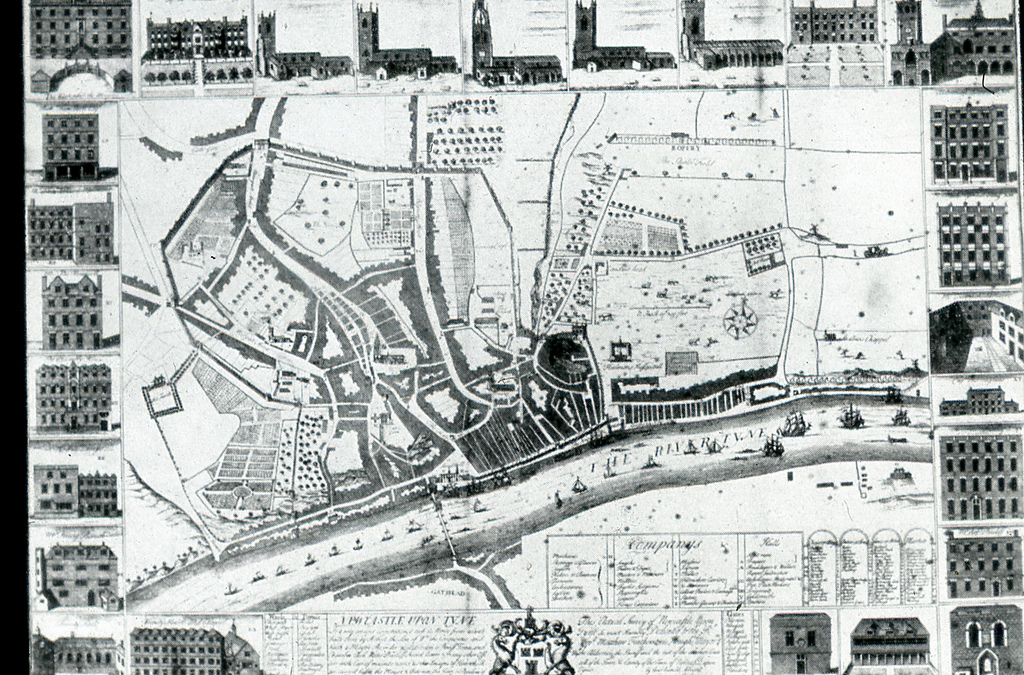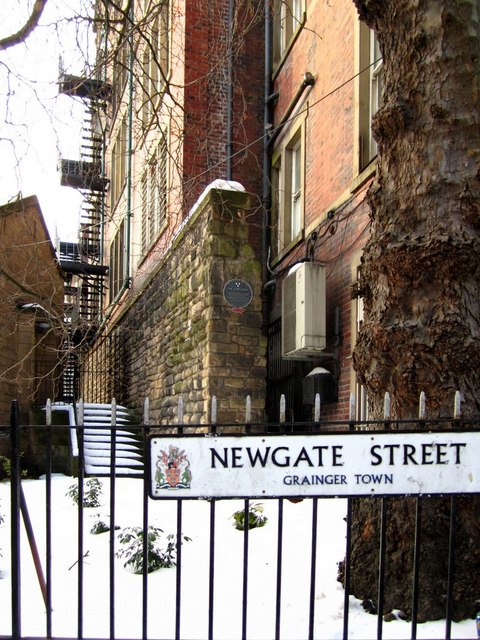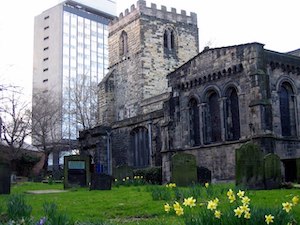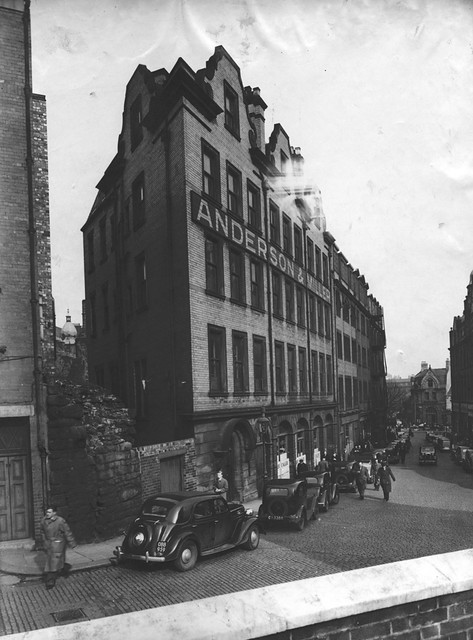Topics > Newcastle City Centre > Streets > Newgate Street > St Andrew's Church > History of St Andrew's Church
History of St Andrew's Church
Extract from: Eneas Mackenzie. A Descriptive and Historical Account of the Town & County of Newcastle-upon-Tyne, Including the Borough of Gateshead. Mackenzie and Dent, 1827.
ST. ANDREWS CHURCH.
HISTORY.
FEW writers on ecclesiastical architecture, until lately, have attempted to point out the peculiarities of sacred buildings erected in very remote ages; and none have succeeded in giving a decisive criteria for appropriating variations of architectural styles to determined periods. It is, therefore, extremely difficult to ascertain the precise date of ancient structures where written testimony is wanted, as is the case in respect to this church. Some presumptive proofs of the date of foundation even of old parochial churches may, however, be deduced from an analogy of style with superior edifices, whose origin is authenticated.
The pillars that divide the aisles of this church are circular and low, with plain octagon capitals, and supporting heavy circular arches, ornamented with a kind of embattled frette. The lofty arch which forms the entrance into the chancel is also circular, and embellished with the chevron work or zig-zag moulding. Here then we discover all the characteristic features of that style of architecture denominated Anglo-Saxon; and it is generally agreed that the early ecclesiastical buildings of the Anglo-Normans were erected with few deviations, as to architectural fashion, from those of their Saxon precursors. The obtuse pointed arch, slender pillar, and variegated ornaments, were variations introduced into sacred architecture a few years previous to the death of king Stephen, which took place in the year 1154, before which time this church has probably been founded. All the other parts of the church seem to have been altered and rebuilt; and nothing of the original structure remains except a few courses of stone-work, which may be easily discovered on examination. The erection of this church has been ascribed, though without any sufficient authority, to David king of Scots, who died in 1153; and which agrees with the above conjecture. Bourne, indeed, is of opinion that it was built before king David was born; because, according to tradition, it is the oldest church in town, and St. Nicholas', it is admitted, was erected before the time of king Henry I. But as the church of St. Nicholas was burnt down in 1216, this church may be the oldest ecclesiastical building in Newcastle, though founded after that which has always been called the mother or parish church of Newcastle.
St. Andrew's church is first mentioned in the Chartulary of Tynemouth monastry, in the year 1218. The justices itinerant held their courts in this church in 1280. In 1387, John bishop of Durham granted an indulgence of forty days to those who would contribute any thing to the reparation of St. Andrew's church, and to the chapel of the Holy Trinity in the same: and in 1392. Oswald bishop of Galloway granted an indulgence of forty days to such persons as should say their prayers devoutly at this church. This indulgence is dated at York, for it appears that the bishop of Galloway was suffragan to the archbishop of York.
This church received so much damage during the siege of Newcastle in 1644, that no service was performed therein for a year afterwards. As related before, "a breach was made in the wall near to the church capable of admitting ten men abreast."
In 1652, this church was repaired by an assessment upon the houses and lands in the parish: but the parishioners, in 1678, petitioned the common council to assist them in the necessary reparations.
The floor of this church was first covered with flags in 1707: and in the following year, the corporation of Newcastle gave £10 towards the repairs then made, a cess of 6d. per pound on all the lands and tenements in the parish having been insufficient to discharge the expense incurred. In 1711. there was a neat gallery erected at the west end of the church. The old porch, in 1726, was taken down, and the present one built. The church, in 1763, underwent a general repair.
The gallery at the west end of the church was pulled down in 1782, and the present one built for the organ, with sixteen new pews beneath the organ-loft. The north gallery was erected in 1785; and three years afterwards, the third pillar in the north aisle was taken down, and two arches thrown into one. The pulpit was also altered.
In 1792, a gallery was built on the south part of the church, for the use of the charity-school for girls and the charity-boys. The church was cleaned, repaired, and painted in 1796: and, in 1799, it was again repaired and ornamented. The north gallery was extended in the preceding year. In 1812. the church was repaired and painted: the church-wardens this year expending £821, 8s. 4d. Some necessary reparations were also made in the year 1814: and a frame-work of wood and glass was put up at the west end of the north gallery. The whole church was repaired. cleaned, and painted in 1818.
CHANTRIES.
There were anciently three chantries in St. Andrew's church; one dedicated to St. Mary, another to the Holy Trinity, and a third to St. Thomas.
St. Mary's Chantry is mentioned in a charter dated the latter part of the reign of king Edward I. No deed of foundation was shewn at the suppression; but the yearly value was found to be £6, 12s. 10d. The last priest was Sir John Sadler.
The Chantry of the Holy Trinity is supposed to have been founded by Sir Adam de Athol, knight, lord of Jesmond and sheriff of Northumberland, 5 king Richard II. 1383. In the indulgence granted for the service of this church in 1392, by the bishop of Galloway, it is said, "That whoever offers or sends, or causes to be sent to the chapel of the Holy Trinity in the northern part of the same church, either gold, silver, vestments, books, chalices, or any other ornaments, which are wanting to the aforesaid chapel, or altar, or image of the Holy Trinity, which is in the same chapel—or who shall fall down upon their knees before the image of the Holy Trinity, aforesaid, and pray for the health of Sir Adam de Athol, knt. as long as he lives, and for his soul after his decease, and for the soul of the Lady Mary his wife, whose body lies buried in the same chapel of the Holy Trinity, shall, as often as they perform those things, or any of the things before-mentioned, have the benefit of a forty days' indulgence."
"Now from this it is observable," says Bourne, "that waste place in the northern aisle, which opens into the quire, must be the chapel here spoken of. For there lies the body of Sir Adam's wife, which is said in the indulgence to be buried in the chapel of the Holy Trinity; as also the body of Sir Adam himself. The building itself is after the manner of chapels, which were added to parish churches; and it is still observable, that at the top of the north window in the chapel there seems to be a picture of the Holy Trinity, represented according to the superstition of these times by the face of an old man, our Saviour upon the cross, and the figure of a dove; it having been always customary in these times, not only to have the image of the saint set up to whom the church was dedicated, but also to adorn the windows with it." The yearly value of this chantry at the suppression was £4, 2s. 10d. Thomas Westhe was the last incumbent, and had a pension of £2, 1s. 5d. per annum.
The Chantry of St. Thomas is not mentioned in the certificate of colleges and chantries in Northumberland and Durham, 37 Henry VIII. remaining in the Augmentation Office. By an inquisition taken 19th of Elizabeth, preserved in the archives of the corporation of Newcastle, there was a house belonging to it, bounded on the west by the end of St. Andrew's church, on the north by a house then in the possession of Richard Atkinson, on the east by the High Street, and on the south by the church-stile. It was valued at 10s. per annum. An old account which Bourne saw mentions an orchard belonging to it, rented by Sir Robert Brandling at 3s. 4d.; but where it stood did not appear.
DESCRIPTION.
Although the date of the erection of this church cannot be ascertained with satisfactory precision, yet it exhibits some unaltered and uninjured specimens of AngloNorman architecture. The windows, which form an important and obvious feature in every division of ancient architecture, in this building present several varieties of form. The window at the east end, and that on the south side of the communionplace, are divided by two mullions, which at the top form a simple intersection, indicating the earliest stage of the pointed style of architecture, prevailing from 1154 to 1199. The size and ornaments of the other windows shew the vicissitudes of fashion. One at the west end of the church is very spacious and beautiful: but others, particularly on the north side, are quite modern, and not in accordance with the general style of the edifice. The buttresses are slight and unornamented, and, with the plain parapet, preserve the character of the early Anglo-Norman architecture. There is a brick chimney run up against the exterior of the south cross—one of the barbarous improvements of modern times.
The interior of this venerable building has been greatly altered; and, in consequence of the gradually increasing demand for seats, it is now crowded and disfigured with galleries. The principal entrance is by a porch of modern architecture, at the south-west corner of the building. The inner door of the old porch opened into the church; but it now leads into a kind of vestibule, 12 feet in breadth, and which has been partitioned off from the body of the church. A door at the middle of this entrance opens into the middle aisle, which, to the entrance of the chancel, measures 58 feet in length. The north aisle is now divided from the middle one by three pillars, and the south aisle by four pillars. The entire breadth of the three aisles is 63 feet: but the breadth of the church, including the north and south cross, is 79 feet nearly. The pulpit stands against the fourth pillar of the south aisle. A stove has been lately placed in the middle aisle, before the entrance into the chancel.
The chancel, from the fine Saxon arch which forms the entrance to the east end, measures 58 feet in length. The breadth is only 18 feet. The west end of the chancel is occupied by pews. The altar was beautified in the year 1781, when a sub scription was made for procuring a new service of silver plate and a new altar-cloth. Above the altar is a fine picture, representing the Last Supper, by the celebrated Giordano. It was presented by Major Anderson in 1804. The beauties of this superb painting cannot, however, be seen to advantage, in consequence of the bad light in which it is placed. In order to remedy this defect, it has been proposed to build up the east window, and to enlarge and raise the old window on the south side of the communion-place.
The obtuse pointed arches that separate the side aisle from the north and south cross are evidently alterations, made at times subsequent to the erection of the original building. The ceiling above the centre and north aisle is plastered and whitened; but the old, simple, and venerable ribbed roof is preserved above the south aisle and the chancel.
Trinity chapel, which is 28½ feet long, and 23 feet broad, adjoins the south side of the north aisle. An obtuse pointed arch divides this place from the choir, and proves that it is an addition made in after times to the original building. Having been the chantry of the Holy Trinity, it was probably erected some short time previous to the year 1387, when it is mentioned in the bishop of Durham's indulgence before cited. The Font, which formerly stood at the west end of the church, near the porch, now stands in this chapel. It has a lofty, curious, and finely carved cover. On the east side is the door into the new vestry, above which are the royal arms.
The old vestry, which communicates with the south side of the chancel, is supposed to have been another chantry. It is a very ancient building: the roof is formed by ribbed arches, and covered with large square stones. The third chantry, Brand thinks, has been on the north side of the church, "where," he says, "it still remains, having been used, not many years ago, as an ale-cellar to an adjoining alehouse." This old erection was once the habitation of the beadle. It was pulled down in 1788, and the new vestry built upon its scite. It is, however, very probable, that one of the chantries was in the south cross. In the wall there is a niche, which appears to have held holy water; and the remains of painted figures may yet be traced on the wall within the finely ornamented window that faces the south.
ORGAN.
In 1785, Mr. Donaldson built the present organ for £315, which sum was raised by a voluntary subscription. In 1799, the same artist received £21 for repairing it. The organ, in 1817, was repaired, cleaned, and tuned by Mr. Nicholson of London, for which he was paid £40. In 1819, it being out of repair, Mr. Grey proposed to put it in proper order for 200 guineas, towards which Major Anderson generously subscribed £50. Messrs. Wood, Small, and Co. Edinburgh, in 1823 put two new stops in the organ, which cost £50, 10s. 4d.
The common council, in 1776, made an order to establish a salary of £20 per annum, for the organist of the organ intended to be set up in St. Andrew's church. When Thomas Wright was chosen organist, April 21, 1796, his salary of £20 per annum was paid out of the church-cess. Mr. Henry Munro, the present organist, was appointed October 27, 1796. His salary, in 1822, was raised to £30 per annum.
THE STEEPLE.
Each side of the tower measures 25 feet, exclusive of the heavy projecting buttresses. Though now a clumsy and misshapen erection, it has anciently possessed considerable lightness and beauty. A door-way at the west end, and three capacious windows, have been built up. By examining the interior, it is also evident that the belfry has been supported by intersecting arches, which have probably had, like the other churches, the name and arms of Robert Rhodes in the centre. At the east end of the steeple, on the outside, there is the same mark of a sloping roof that there is often seen in the remains of churches that have belonged to religious houses.
Great part of this steeple appears to have been battered down during the memorable siege of the town in 1644. The new masonry is very observable; but enormous buttresses have been found necessary to prevent it from falling. In 1808, Major Anderson proposed to present a clock, provided the parish would prepare the steeple for its reception; or to alter the steeple, if the parish would undertake to purchase a good clock. Mr. Reed, mason, was therefore ordered to examine the steeple; when he reported that it was "in such an imperfeet state, as to render it unsafe to raise the bells." The above gentleman then liberally offered, if the parish would build a new tower 80 feet in height, to raise upon it an elegant spire, equal in height to St. Nicholas'; but this singularly generous offer was not accepted, it being judged unsafe to attempt any considerable alteration in so old a building.
BELLS.
In the year 1726, the old bells were taken down; and the present six bells were procured by a public collection. The corporation gave £50 towards the expense. They were cast at London, by Mr. R. Phelps, and are now a hundred years old; "It is generally allowed by professional men, that this peal has never been surpassed, and but seldom equalled, in point of musical correctness and harmony of tone, by any other peal that has been cast, either before or since that time. Not one bell in the six is in the smallest degree faulty."
MONUMENTAL INSCRIPTIONS.
This church contains a great number of escutcheons, which will be noticed in the account of charities bequeathed to the poor, &c. There are very few mural monuments: but several old grave-stones remain on the floor, with inscriptions and armorial bearings. The church-yard is crowded with funeral monuments.
In Trinity chapel is the most remarkable monument in this church. Sir Adam de Athol. and his wife Mary, under a very large stone, which has originally been plated very curiously with brass. The remains of their effigies are still to be seen. He is pictured at length in armour. having a sword on his left side, and a dagger on his right. Her effigy has nothing remaining of it but from the shoulders upwards. The arms of both their families are still to be seen on the tomb-stone. Bourne says, "What remains of the inscription is this: Hie jacent Dominus Adamarus de Atholl miles & Domina Maria uxor ejus quæ obiit quarto decimo die mensis...... anno Domini millesimo tricentesimo......... Animarum propitietur.'—The remaining part of the date is broken off: Grey, however, in his account of this stone, tells us, it was in the year 1387. which is very probably the time that his wife died: for it is a mistake that he died then, as appears by the indulgence above-mentioned." Brand adds. "There was, very lately, on this stone, inlaid with brass, a shield with arms, as quartered at this day by the Dukes of Athol."
On a tomb-stone,—
"Here lieth Cuthbert Nicholson Cordiner He Depted this life ye 16 of Ianuary 1667 Alice His Wife Depted.......... the 23 Ano........... their Sons Cuthbert. Lancelot & Phinehas survived of 6 Children"
On other stones in this chapel,—Joshua Twizell. died June 23, 1718—Thomas Winship, tanner, died September 2. 1695—Christopher Rutter, baker and brewer, died March 17. 1714—Mrs. Elizabeth Davison, mother of Mr. Thomas Davison, died January 20. 1724. aged 84 years—Nicholas Fenwick, merchant, died 14th December. 1725. and a few others.
In the chancel. near the altar, James Ogle, of Causey Park, Esq. upon whose tomb-stone, which is of marble, is the following inscription:—
"Hic jacet Jacobus Ogle de Causey Park in comitatu Northumb' armiger, antiquitate domus utpote ex prenobili baronia Ogle de Ogle stirpe recta linea oriundus, vere clarus: sed invicta in perduelles, grassantibus nuperis civilibus bellis. animi magnitudine, constantia in regem etiam in tristissimo authoritatis deliquio. Fidelitate. in superiores observantia in pace comitate, in inferiores benignitate, quæ omnia justissimo titulo sua vocare poterat, multo illustrior. Obiit Dec. 4°. die annoque Domini 1664."
Cuthbert Lambert, M. D. and his son Cuthbert, are interred within the rails of the communion-place. There are also buried, within the chancel, Thomas Harrison, barber surgeon, died 24th February, 1679—also Beadnell, Barker. Todd, Tanner, Rutter, Romaine, Younger, Mills, Drummond, Reed, Harrison. The latest is David Cooper, died 1748. On a mural monument, on the north wall of the chancel, near the communion-place,—
"Sacred to the memory of Mrs. J. Wilson, for many years a conductor of a seminary for female education in this town, who to consummate skill in directing the mind of youth to what is virtuous and elegant, added the example of that dignity, gentleness, and purity of character, which it was the great object of her life to inculcate. She died Dec. 1, 1806, aged 59 years."
Near to this is another small monument, with the following inscription:—
"Never was tribute by an affectionate widow more duly paid to honour, justice, and merit, than by the erection of this monument to the memory of Ralph Waters, who closed his well-spent life on the 26th of Oct. 1817, aged 68 years."
On the same side, within the entrance into the chancel,—
"In the burial-place of this chapelry lie the remains of William Darnell, merchant adventurer, a man whose strict integrity, sound understanding, and extensive information on commercial subjects, joined to a warm and benevolent heart, secured to him through life the confidence and esteem of numerous friends.—Likewise of FRANCES his wife, of which it is not too much to say, that she was a pattern of Christian graces to all around her. They lived for more than forty years in bonds of the most tender affection. Their good deeds speak for them on earth: their trust was, that, through the merits of their Redeemer, they should not live in vain. Wm. Darnell died 13th April, 1813, aged 81; Frances died 8th August, 1805, aged 66. This monument was erected to the memory of his parents by W. N. Darnell, B. D."
Robert Mills, house-carpenter, is interred in the north aisle; and Dorothy Harrison, who died May 27, 1702, in the south aisle.
In the entrance at the west end of the church are the burial-places of Richard Ward, of Walcott in Norfolk, Esq.; of Joseph Richardson, 1763; of Henry Cowell, 1761; of William Milburn, plumber, 1772; of John Hunter, Esq.; of Captain William Hedley; and of the family of Bates. On the north wall, in ascending the stairs of the gallery, is a neat mural monument, on which is the following inscription:—
"We shall go to Him, but he shall not return to us.—Ralph Bates of Milburn Hall in Northumberland Esquire Lieut. Colonel Commandant of the Southern Reg. of Local Militia one of his majesty's justices of the peace and sheriff of the county in the year MDCCCXII departed this life June VI MDCCCXIII aged XLVIII years leaving two sons and three daughters. This tribute of affection was erected to the memory of the best of husbands by his afflicted widdow. In the same vault near this place are deposited the remains of his father Ralph Bates Esquire who died August 11 MDCCLXXXIII aged LIII years."
Underneath are the arms,—Sable, a fess engrailed or, between three dexter hands couped bendways proper, for Bates.—Impaling, Gules, a chevron between three eagles' heads erased or, for Ellison.
IN THE CHURCH-YARD.
On a flat tomb-stone, south-west of the church, is inscribed, "The burial-place of Ralph Beilby, who departed this life June 4, 1817, aged 73 years." Adjoining is another,—
"The tomb of Thomas Beatt Wood, who departed this life 9 Dec. 1813, æt. 17. He was not formed for the rude blasts here. He shrunk from it like many a tender bud—to open in more congenial skies—to an eternal spring. This stone was erected by his father, James Wood, M. D.— Also of his brother. William Atkinson Wood, who died 18 Sept. 1816, æt. 16. The bonds of affection united them in life, and in death they were not divided.
They steered their course to the same peaceful shore,
Not parted long, and now to part no more.
Here also is interred Margaret, wife of James Wood. M. D. who died 29 June, 1820, aged 30.— Also the above James Wood. M. D. who departed this life June 30, 1822, æt. 56 years."
"Sacred to the memory of Thomas Heath, Esq. who died 14th Dec. 1819, aged 72 years." On a flat stone, "Mr. James Harvey, tobacconist, departed this life 17th May. 1822. aged 54 years."—"The family vault of Joseph Airey, Esq. who departed this life September 3, 1824, aged 74 years."—"Here lies the remains of Dorothy Backhouse, relict of the late Joshua Backhouse, Esq. of Colbeck. Cumberland, who departed this life May 12. 1819. in the 82d year of her age."—"The burial-place of Benjamin Tulloch, of this town, surgeon. Margaret, his wife, died December 4, 1820, aged 29 years. Also their son William Battye, who died 18th June, 1821, aged 11 months."—"In memory of Jane, widow of John Widdrington, Esq. of Hauxley, Northumberland, who died 6th September, 1824, aged 88."—"The family burial-place of Edward Hetherington, Esq. who departed this life on the 19th April, 1824, aged 66 years."—"The congregation of Protestant Dissenters, assembled at the High Bridge in this town, have placed this testimony to the memory of their late faithful and esteemed minister, the Rev. James Murray, who fought a good fight, kept the faith, and finished his course the 28th June, 1782, aged 50 years."
"Walter Saunders, Esq. captain in the East Middlesex Militia, who died the 21st of March. 1798. in the 49th year of his age, universally regretted by the corps."—"Matthew Brown, died April 4, 1803, aged 45 years."—"Patrick Sterling, Esq. of Dundee, died 30th January. 1812."—"Sacred to the memory of John Fryer, who departed this life October 5, 1825. aged 80 years. Elizabeth his wife died October 22, 1792. aged 42 years. Louisa, wife of Joseph Harrison Fryer, died January 10, 1810, aged 23 years."—"Here lies the remains of Joshua Story, schoolmaster, who departed this life April 5. 1782. aged 26 years 9 months."—"To the memory of John Fenwick. Esq. solicitor, who died 14th March, Anno Domini 1820, aged 80 years. This stone was placed here, as a token of respect, by his nephew. Mark Jobson, master mariner, the 22d Feb. 1821."—"Sacred to the memory of Edward Bruce, schoolmaster, who died 12th June, 1806, aged 32 years. Sarah Bruce, mother of the above Edward Bruce, died October 28, 1814. aged 73 years."
"Underneath are deposited, in hope of a joyful resurrection, the remains of Elizabeth Dickson, wife of Major-general Dickson, and youngest daughter of Alexander Collingwood, Esq. of Unthank, in the county of Northumberland. In remembrance of her amiable and exemplary conduct, as an affectionate wife and truly tender parent, this stone is placed by her afflicted husband. She died Feb. 25. 1801. aged 55 years.—Also are here deposited, with the same blessed hope, the remains of John Dickson, the husband, a general in his majesty's service, who served his country with honour and integrity for a space of 56 years, and whose loss is deeply felt by his afflicted family and friends. He died April 14, 1816, aged 76 years."
The funeral vault of "William Peters, of Newcastle upon Tyne, attorney-at-law. He died 13th May, 1807, aged 75 years. Richard Peters, his son, died 11th June, 1793, aged 24 years."—"Sacred to the memory of Frances Rudd, daughter of the late Abraham Blackstone Rudd, vicar of Diddlebury, in the county of Salop, who died August 17, 1820, aged 38 years."—" The burial-place of the Rev. George Atkin, of Morpeth, and his family. Ann, his wife, died July 26, 1812, aged 27 years."
"Sacred to the memory of Frances Henrietta, second daughter of Lieut. Colonel Evans, who died May 10, 1819, aged 6 years and 11 months.
She was but as a smile She was, and she is not;
Which glistens in a tear; But her spirit points the way
Seen but a little while, To that celestial spot
But, oh! how lov'd! how dear! Where beams eternal day."
"April 26, 1806, Joseph Bell, painter, departed this life, aged 60; highly and deservedly respected by all who knew him, for his talents as an artist, his integrity as a tradesman, and his general worth as a man."—"Sacred to the memory of Henry Munro, formerly of Lincoln, who departed this life Jan. 11, 1819, aged 70 years," &c.
On a table monument opposite the porch door:—
H. R. I. P.
Car. Avison denati 9 Maii, 1770. a° ætatis 60.
Cath. Uxor 14 Octob. 1766. —53.
"Simul cum filia Jana conjugi mæstissimo Roberto Page immature erepta 14 Julii, 1773, annos nata, 28.
"Charles Avison, late organist of St. Nicholas' church, son of the said Charles and Cathn Avison, died 6th April, 1793, aged 43 years.
"Hic Situs est Robertus Page, Armiger, Vir virtutiet et rectefactis insignio Diutissime languescens morti succubuit A. D. 1807, Ætatique 69.
"Charles Avison, son of the above Charles Avison, organist, departed this life Feb. 19, 1816, aged 25 years."
On an adjoining table monument,—
"In memory of Edward Avison and Margaret his wife, who were eminent for piety and primitive simplicity of manners: Having each borne a lingering disease, with the most exemplary patience and resignation; They rejoiced at the approach of death, and expired with hopes full of immortality. He died in October, 1776, aged 29. She in November, 1777, aged 33."
On an upright stone, "The burial-place of Mary, wife of the Rev. William Turner, who died Jan. 16, 1797, aged 37. Also of his child, Thomas, who died May 23, 1790, aged 11 months. John died May 3, 1796, aged 26 months. Philip Holland died Sept. 22, 1811, aged 21 years."—"To the memory of John Coulson, 31 years. master of St. John's charity-school in this town, who departed this life April 4, 1808, aged 53 years."—"Hugh Johnson, who was master of All Saints' charity-school in this town upwards of 40 years. He departed this life Sept.7, 1807, aged 74 years."—"To the memory of John Fenwick, who was many years surveyor to the corporation of Newcastle, who departed this life Feb. 26, 1794, aged 74. Also Mary Lloyd, his sister, who departed this life May 10, 1798, aged 80 years. Fenwick Lloyd died May 14, 1803; Mary, July, 1806, aged each 21 years. Tristm. Lloyd died April 8, 1810, aged 61 years."—"Thomas Hewson, who was many years sheriff's serjeant under the corporation of this town, died Feb.20, 1818, aged 53 years."
On an upright stone,—
"Sacred to the memory of Eliz. Julia Trotter, wife of Thomas Trotter, M. D. ob. May 1st, 1804, Æt. 29 years 6 months.
I ask not inspiration for my aid,
Nor court the praise by venal marbles paid;
My artless strains a nobler tribute own
Than flattery breathes to monumental stone:
Hail! task divine, to pour the tender tear
O'er the lov'd wife, companion, partner dear,
And as it streams, thou sainted spirit, see,
Behold this bleeding heart still points to thee;
Yet while it throbs with pangs too strong to feign,
No impious gusts shall Heaven's decrees arraign,
I bow all grateful for those blessings gone,
I heave no murmur, though I weep and moan;
And while with all an anxious father's care
I rear thy babe and plant thy virtues there,
Cull from the precious treasures of thy mind
Each bright example and each truth refin'd;
Religion oft shall come in visions mild,
To soothe the parent and to bless the child,
Illumine with a ray like thine the lonely road,
Till call'd to part no more we meet in God."
Underneath the flagged foot-path from the church to the south-west door of the church-yard, are a number of family-vaults. "The funeral-vault of Mrs. Hannah Ellison, who died Nov. 21, 1799, aged 68. Elizabeth Ellison, sister of the above Hannah Ellison, died May 25, 1811, aged 78 years."—John Kirsopp, attorney-at-law. —John Hawkes, master mariner.—Richard Swarley.—Joseph Wilson.—John Cram, master mariner.—William Middlemas.—Joseph Richardson.—Thomas Smith, master mariner.—William Nesham.—William Baker.—William Boyd.—Thomas Pearson, &c.
Here are also the burying-places of Thomas Waistell, Esq.—Major Heron—Peter Donnison—Jacob Lambert—James Hunter, coach-maker—Henry Walton, gent.— William Gibson—John Scott—Charles Plummer—Captain Evan Heaton, R. A. D. —Joseph Grey—Robert Marshall—Thomas Shevil—William Wilson—James Purdy —Thomas Harle—William Darnell, mercht.—Thomas Beck—William Wallaice— John Fish, gent.—John Blaylock—John Rennoldson—William Raisbeck and Thomas Gunn—Gale and Polding—Lawrence Turner—Lancelot Blyth—Joseph Hedley—Richard Hill—James Archbold—Robert Liddell—William Smith, Esq.— Stephen Coulson—James Watson—Thomas Winship—Thomas Heath, Esq.— Joseph Airey, Esq.—John Baptist—Edward Surtees, Esq.—Robert Chrissop—John and Jane Ridley—John Bell—Anthony Scott—Jacob Lambert—Thomas Bell, merchant—Edvardo Manners, &c. &c.
THE CHURCH-YARD.
Thomas bishop of Durham, January 12, 1376, granted leave to the parishioners of St. Andrew's to build in their church-yard, saving the episcopal rights and those of the parish-church of Newcastle upon Tyne. In modern times, this has proved to be a very injudicious arrangement. The parishioners, in 1783, were obliged to purchase a piece of waste ground, lying on the west side of the church-yard, to enlarge their burial-ground. This was consecrated by the bishop of Clonfort, in September, 1786. The foot-path on the east and south-east part of the church-yard, was made in the year 1793, and a door that opened into Darn Crook shut up. In 1818, the corporation permitted the parish to pull down a part of the town-wall extending from the north-west corner of the church tower to Darn Crook, and also to take into the church-yard an adjoining part of the King's Dykes. This new portion of ground was consecrated by the Lord Bishop of Oxford. The new wall which adjoins Gallowgate is surmounted by iron railings. In 1824, it was resolved to pull down the public house which adjoined the church, part of which belonged to the parish. The other part was purchased by a subscription amongst the opulent inhabitants of the parish, aided by the corporation. Since this unseemly building was removed, the church is entirely exposed to public view; and the side of the church-yard adjoining the street is enclosed by a low stone wall, which supports a neat iron railing. Two ornamental malleable iron gates have been set up; the foot-path on the outside has been widened and flagged; and, on the whole, the appearance of the church and its cemetery has been much improved.

from https://books.google.co.uk/bo…
A Descriptive and Historical Account of the Town and County of Newcastle Upon Tyne: Including the Borough of Gateshead. Eneas Mackenzie, 1827.
- Digitised Google eBook.
Added by
Simon Cotterill
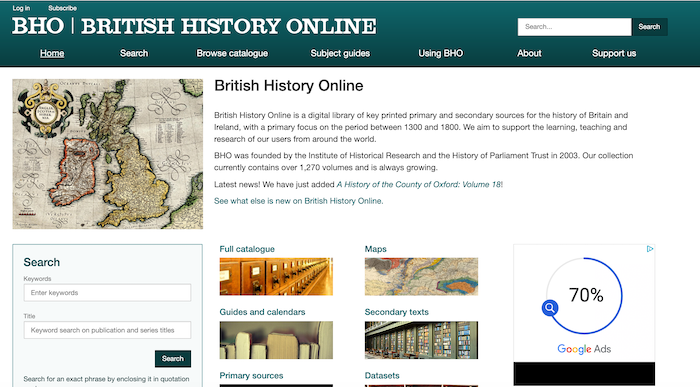
from http://www.british-history.ac…
Descriptive and Historical Account of the Town and County of Newcastle-upon-Tyne, Eneas Mackenzie, 1827
- Historical Account of Newcastle-Upon-Tyne Including the Borough of Gateshead. Free content digitised by double rekeying.
Added by
Simon Cotterill

Co-Curate Page
Siege of Newcastle, 1644
- Overview About The Siege of Newcastle 3rd February1644: start of the Siege of Newcastle, which lasted until 19th October 1644, when the Scottish Covenanters took the city. The Siege of …


from https://books.google.co.uk/bo…
A Descriptive and Historical Account of the Town and County of Newcastle Upon Tyne: Including the Borough of Gateshead. Eneas Mackenzie, 1827.
- Digitised Google eBook.
Added by
Simon Cotterill

from http://www.british-history.ac…
Descriptive and Historical Account of the Town and County of Newcastle-upon-Tyne, Eneas Mackenzie, 1827
- Historical Account of Newcastle-Upon-Tyne Including the Borough of Gateshead. Free content digitised by double rekeying.
Added by
Simon Cotterill

